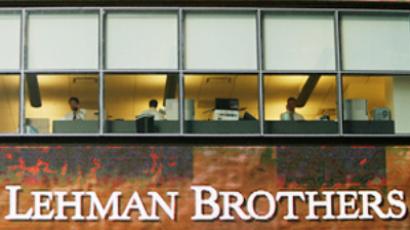End of U.S. poultry imports leaves onus domestic producers
Russia will end poultry imports from the USA as of January 19 due to health concerns, with Prime Minister Vladimir Putin saying local producers can fill domestic demand and even start exporting poultry within 4 years.
Russian authorities say they want to improve the quality of poultry on the local market by using domestic producers. PM Putin says global markets will come next.
“If positive trends remain, in four-five years maximum we will be able not only to meet 100% of internal demand of poultry with our domestic goods but also to win a significant place in the global market.”
Domestic producers currently supply only about half of the poultry on the Russian market.
New safety requirements introduced at the beginning of the year have effectively banned poultry imports from the United States, which Russia's Federal Consumer Protection Service says is treated with chlorine, posing a health danger. Europe has had a ban on U.S. poultry, for the same reasons since 1997.
Victoria Sokolova, retail analyst at Troika Dialog Group, says Russian meat producers have the ability to step into the supply gap provided they receive investment.
“Russian producers will increase their share in the market because especially of the larger players, they have the ability, the technological know-how to bring a very quality product to the market. The question here is the investment, financing and timing.”
However, American producers say there's no scientific proof to that claim, with the U.S. Agriculture Secretary warning the Russian move could hurt bilateral relations. The move could seriously hit U.S. poultry producers, with Russia a key export market. Some analysts say the U.S. chicken meat ban could mean a short term deficit for Russia – possibly as soon as March.
According to Nezavisimaya Gazeta, the threat of a meat deficit pushed the prices up by almost 10% in just two days, 11 and 12 of January. Andrey Terekhin, head of the Association of Russian operators of the Meat and poultry market is also warning about the likelihood of a deficit on the entire market in Russia of both foreign and domestic suppliers.
“Without any doubt the prices start to move up, and quite aggressively, primarily in regards to imported goods. The main reason is the ban on the export of American ham since January 1. Thereafter the prices for domestic poultry grows, and after that, for the entire meat group – pork and beef. This is completely obvious. The situation on the market is worrisome, because if a large volume is to leave the market, around 600 thousand tones, we are forecasting an extremely serious deficit after which will follow changes in the structure of the market and the price situation.”
At the same time Russian produced chicken prices rose over the same period from 60-62 roubles to 67-68 for 1 kg, which Sergey Lisovsky, the first deputy chairman of the committee of the Federal Council on agro-food policy calls a necessary measure by a few producers.
“The cost of production for chicken carcasses with VAT is 65-67 roubles today per kg. The cases when poultry is sold for 60-62 roubles are likely attributed with financial problems of some factory which likely involuntarily sold their product for less than the production cost.”
Lisovsky believes wholesale prices for Russian products are steady and possibly even declining slightly, with only imported meat likely to become more expensive, and domestically produced chicken unlikely to rise by more than inflation. But he also believes it is possible that retail prices could rise.













